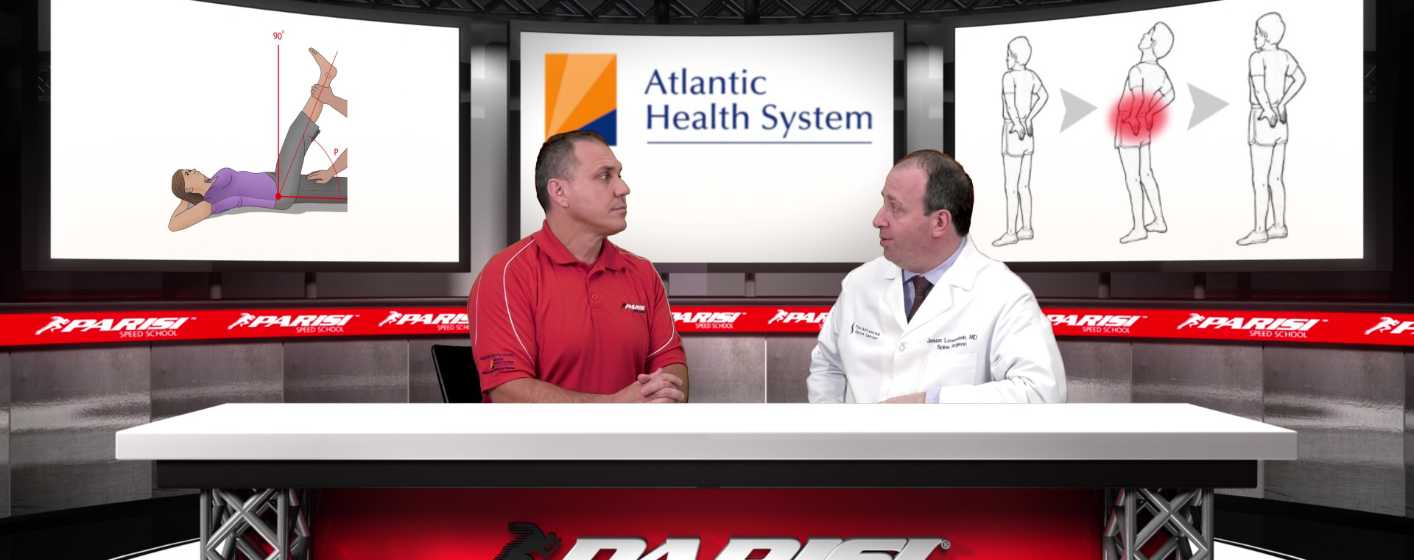In installment 3 of our series on spondylolisthesis and spondylolysis, Dr. Jason Lowenstein of The Advanced Spine Center and Atlantic Health discusses the vital importance of detecting spinal stress fractures early in young athletes and adolescents. Dr. Lowenstein, Director of Scoliosis & Spinal Deformity at Morristown Medical Center, explains how a series of increasingly sophisticated tests can be used to diagnose stress fractures (and even stress reactions!) in young children.
Has your child been suffering from chronic, recurrent back pain? Don’t ignore the signs. Even if your child’s x-ray or MRI comes back negative, he or she could still have spondylolisthesis. Sometimes ordering a bone scan or CT scan is the only way to suss out the true root of the problem. If you feel like your child may be suffering from spondylolisthesis, contact Dr. Jason Lowenstein of The Advanced Spine Center today and receive a truly cutting-edge diagnostic review.
Video Transcript:
Parisi: I am here with Dr. Jason Lowenstein at Atlantic Health, home of Atlantic Sports Health and we’re talking about spine health here today. We’re talking about different spinal injuries that young athletes get and adults might even incur. So, when we talk about spondylolisthesis and spondylolysis—we went over those in our last segment—you know, what are the ways that we can really address these early on?
Dr. Jason Lowenstein: Yeah, I mean, oftentimes, this is a spectrum, where it starts out with a small stress fracture, which can become a chronic stress fracture or actually a slippage. (That’s spondylolisthesis.)
Early diagnosis is so important because this is one of those problems that if you catch it early enough and if you treat it appropriately, it can be treated effectively and really allow these kids, these athletes, to go on and have completely normal, pain-free careers. But, if you can catch it early, it’s really important.
So, usually, you know, when a child has recurrent pain, usually the first thing we do is examine them. We see if there are any changes in their normal physical examination, which might suggest that they have a stress fracture or spondylolysis. Pain on extension is often a tell-tale sign and that’s because that repetitive hyperextension is what causes it. They will oftentimes will get hamstring tightness too because that L5 root is very irritated from the fracture and that can cause hamstring tightness.
If we’re suspicious and we think that they have a stress fracture, the first thing we’ll do is order an x-ray. We’ll get a simple x-ray to try to see if there is a mechanical fracture. If the x-ray is not conclusive—if we cannot tell based on the x-ray results but we’re still very suspicious—then we’ll order an MRI. An MRI is really a great, safe study. There’s no radiation. An MRI is simply a big magnet, but it will allow us to see more clearly on the inside and we can actually see if there is a stress fracture. There are several other tests that we can order. A bone scan is one, where basically, you’re looking for blood flow. If you have a stress fracture, the body is usually trying to fix that by increasing blood flow to that area to encourage it to heal.
Parisi: Interesting.
Dr. Jason Lowenstein: So, a bone scan is an option. Rarely, if we can’t tell, then we’ll order a CT scan. In an older fracture, a chronic fracture, sometimes the MRI and the bone scan will be negative. But, we’ll order a CT scan because we want to view the bone quality a little better.
Parisi: Wow, so you have a real progression to determine if someone has pain and things keep coming up negative and the pain persists. I mean, what a great pathway that you take your patients down here. I find it really fascinating, how you go down that road and you can take a bone scan and see if there is blow flow. Would that also identify a stress reaction?
Dr. Jason Lowenstein: Absolutely.
Parisi: It would?
Dr. Jason Lowenstein: Yeah.
Parisi: Can you explain a stress reaction as opposed to a stress fracture?
Dr. Jason Lowenstein: Yeah. Sometimes, you can start seeing changes in the bone. So, early on, when the bone is being stressed before it actually cracks, your body will try to heal the damage by increasing blood flow to the area, which is why it will be picked up by a bone scan. And, oftentimes, an MRI will pick it up too.
Parisi: I mean, that’s really cutting-edge because you’re getting to the patient and identifying, “Hey, there’s something going on here. You have a stress reaction, not a fracture, yet. But, there’s stress here being placed on this due to improper movement or over-extension.” You can identify and get to it before something bad happens.
Dr. Jason Lowenstein: Well, and the real value here is trying to make a change to prevent it from becoming a true fracture. So, if you can identify it early and you can change their behavior, change how they’re working out, you can oftentimes prevent having a fracture.
Parisi: That’s the magic. Changing behavior. I know, I’m speaking to the choir. Parents are always trying to change behavior. Get off the electronics. Get off this. Get off that.
Dr. Jason Lowenstein: Of course. Of course.
Parisi: We’ll change it to keep that back healthy, to keep those spines working the right way. Thank you so much for the information.
Dr. Jason Lowenstein: My pleasure.
Parisi: Really cutting-edge over here at Atlantic Health with Dr. Lowenstein, talking about spine health. Take advantage of this information, apply it, and guess what? You’re going to take your game to the next level.
